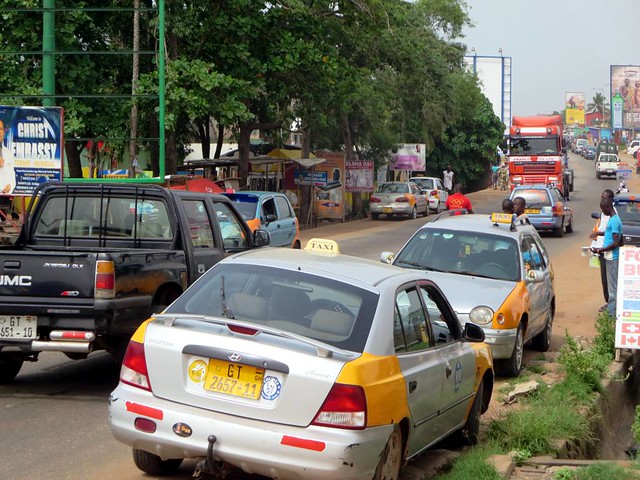

Traffic calming devices in Ghana were effective at reducing vehicle speeds and pedestrian injuries, a new study has found.
Reducing pedestrian injuries is a pressing need in Ghana in West Africa, where pedestrian fatalities account for more than 40 percent of all road casualty deaths nationally. In many low- and middle-income countries, traffic regulations are sparse or lack enforcement, and pedestrians often share roadway space with vehicles, and both factors put pedestrians at significant risk.
The study, published last week in Traffic Injury Prevention, compared vehicle speeds and pedestrian injuries in 19 Ghanaian settlements with traffic calming devices against 19 settlements without any calming devices. Researchers measured the speed of more than 11,000 vehicles, and found that, in general, 30 percent or fewer motorists exceeded the speed limit in settlements with traffic calming measures, compared to 60 percent or more who exceeded speed limits in settlements that lacked traffic calming measures. In three settlements without calming measures, 100 percent of the recorded drivers traveled faster than the 50 km/h speed limit.
Vehicle speed has a significant impact on the incidence and severity of pedestrian injuries, and researchers found that the odds of pedestrian fatality were significantly higher in settlements with no traffic calming devices.
Speed calming devices used by settlements in the study included speed bumps, humps, and tables; speed limit signs; carriageway narrowing; roadline markings and others. Each location in the speed calming group had between two and five types of devices.
Recommendations from the researchers on reducing pedestrian injuries include routing arterial roads around settlements instead of through them, prioritizing pedestrian safety infrastructure such as sidewalks and pedestrian bridges in future road planning, and exploring speed limit enforcement options.
Lead author was James Damsere-Derry, Ph.D., of the CSIR-Building & Road Research Institute in Kumasi, Ghana, a former Fogarty Fellow at Harborview Injury Prevention and Research Center in partnership with Kwame Nkrumah University of Science & Technology in Kumasi, Ghana. Other co-authors include HIPRC’s Safe and Active Transport section lead Beth Ebel, M.D., M.Sc, and HIPRC Global Injury section lead Charles Mock, M.D., Ph.D., as well as Francis Afukaar, M.Sc., also of CSIR, Dr. Peter Donkor of Kwame Nkrumah University of Science & Technology, and Thomas Ojo Kalowole, Ph.D., of the University of Cape Coast in Cape Coast, Ghana.
Funding for the study came from the Fogarty International Center, U.S. National Institutes of Health, and the National Center for Disease Control and Prevention.